Presentation of the most beautiful places in Pistoia, squares and monuments, with the Map of the places in Pistoia
Also read the overview of
Pistoia
Piazza del Duomo in Pistoia
The Piazza del Duomo is the main square of the city, in the heart of Pistoia, its religious and civil center. It is one of the most beautiful squares in Tuscany. Its appearance is harmonious and austere at the same time, highlighted by its buildings at the foot of the great bell tower with the San Zeno Cathedral, the Episcopal Palace, the Baptistery San Giovanni in Corte, the Communal Palace, the 14th century Pretorio Palace and the Palace of the Elders or the Court. Nearby stands the Tower of Catilina.
It is also here that on July 25 the Giostra dell’Orso, the palio of Pistoia, and an important annual festival of blues are held.
Pistoia Cathedral (overview)
The Cathedral of San Zeno, the Duomo di Pistoia, is the most important religious building in the city, a beautiful Romanesque structure with its polychrome facade and beautiful portico. It is accompanied by its large bell tower 67 meters high, rebuilt in the 12th-13th centuries, but of older origin, and whose portico dates from the 14th century.
The beautiful Romanesque interior preserves the original crypt and especially in the Chapel of the Crucifix the sublime Altar of St. James in silver, which was made from 1287 to 1457, with the participation of Brunelleschi and the best silversmiths.
→ Read Pistoia Cathedral of St. Zeno
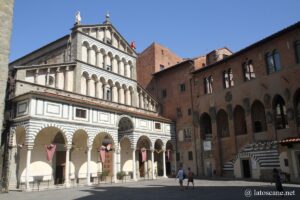
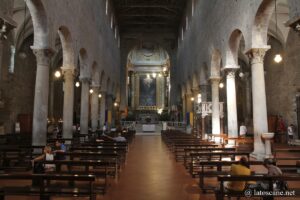
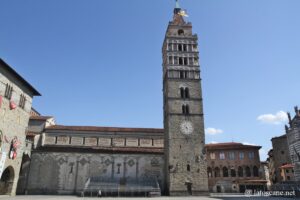
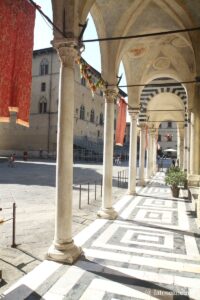
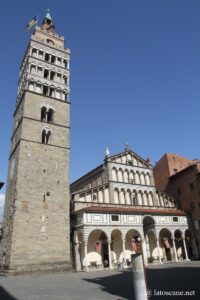
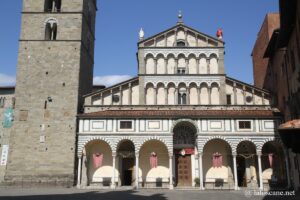
Baptistery of San Giovanni in Corte
Facing the dome, Piazza del Duomo, the Baptistery of San Giovanni in Corte is an octagonal building built in the 14th century in Gothic style on the ruins of the ancient Lombard church of Santa Maria in Corte. It is decorated in front of bicolored white marbles of Carrara and veined green of Prato, a blind loggia, surmounted by a dome. The exterior is particularly rich, while the simpler interior remains unfinished. Its baptismal fountain dates back to the 14th century.
Palazzo degli Anziani
Also called Palazzo del Comune (Town Hall), the Palazzo degli Anziani was the heart of power in Pistoia, built in the 13th and 14th centuries. A 1637 tunnel connects it to the cathedral.
In addition to the town hall, it houses the Civic Museum of Ancient Art of Pistoia, whose works cover the period from the 12th to the 20th century from disappeared religious buildings, donations and purchases, with paintings, sculptures, ceramics, pottery, jewellery, etc.
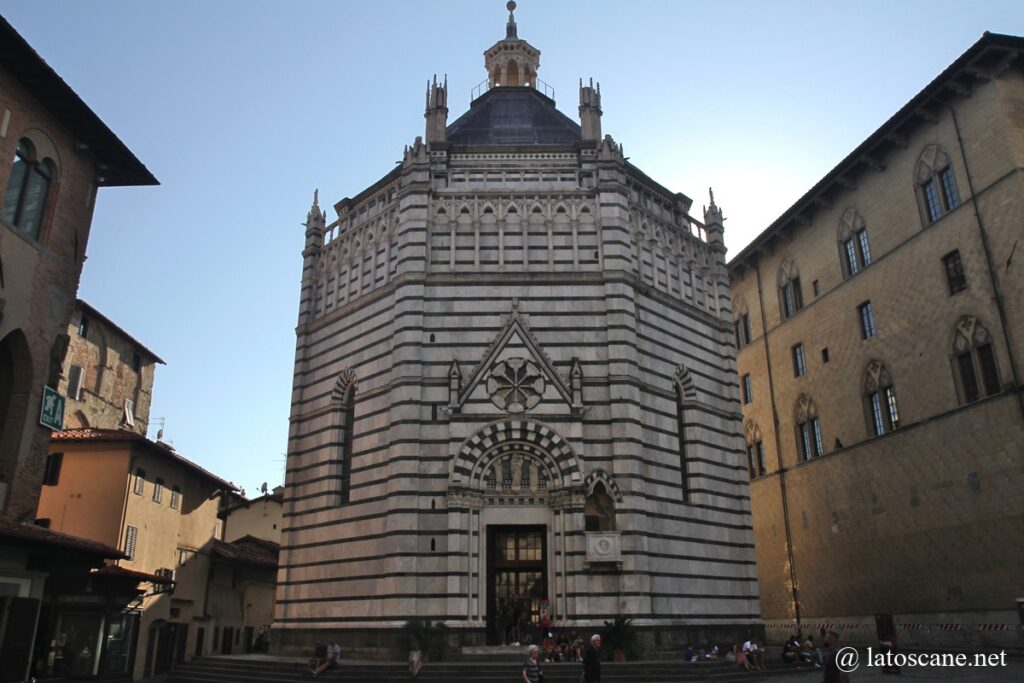
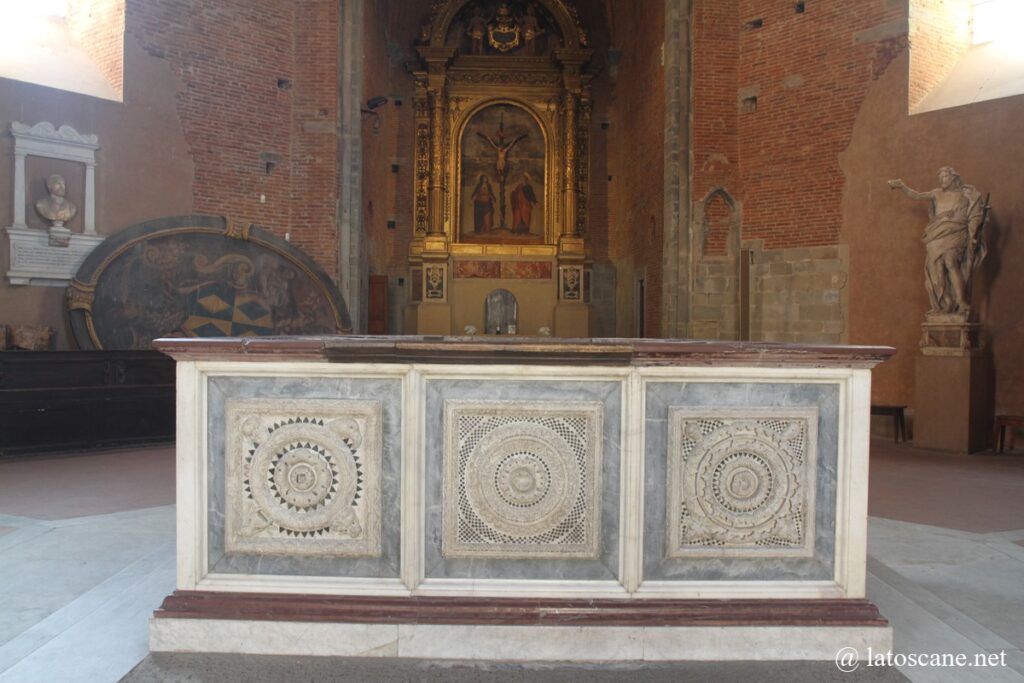
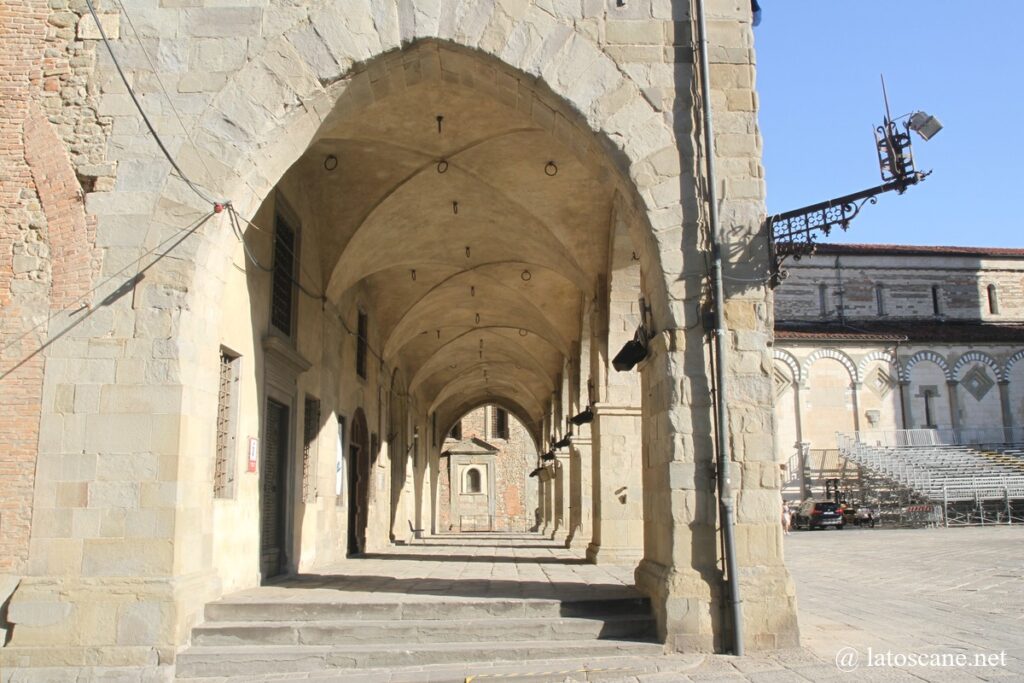
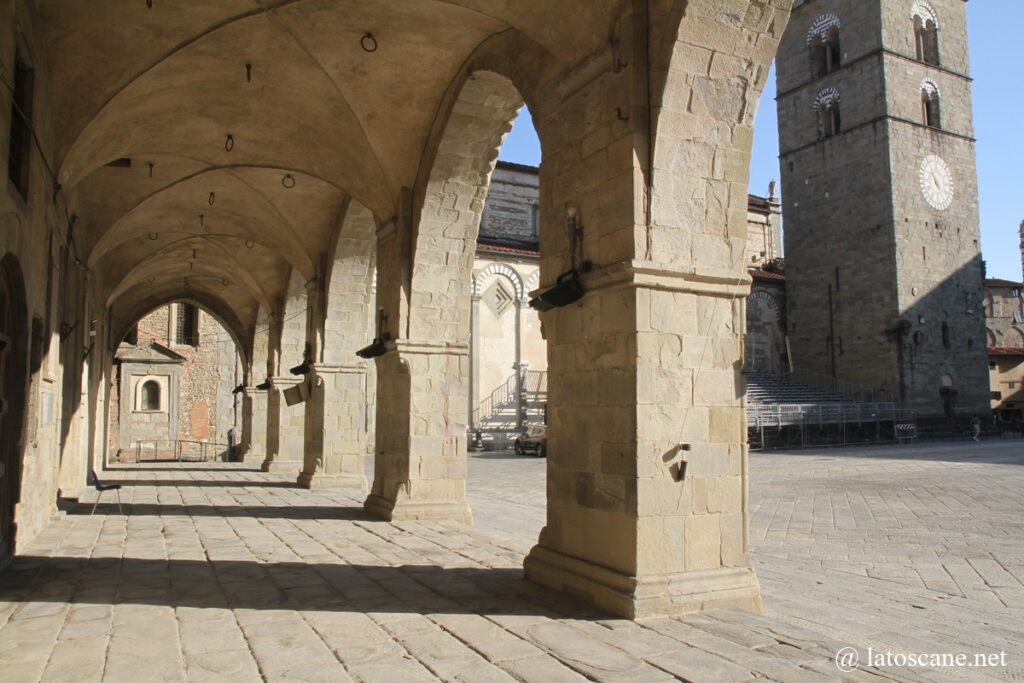
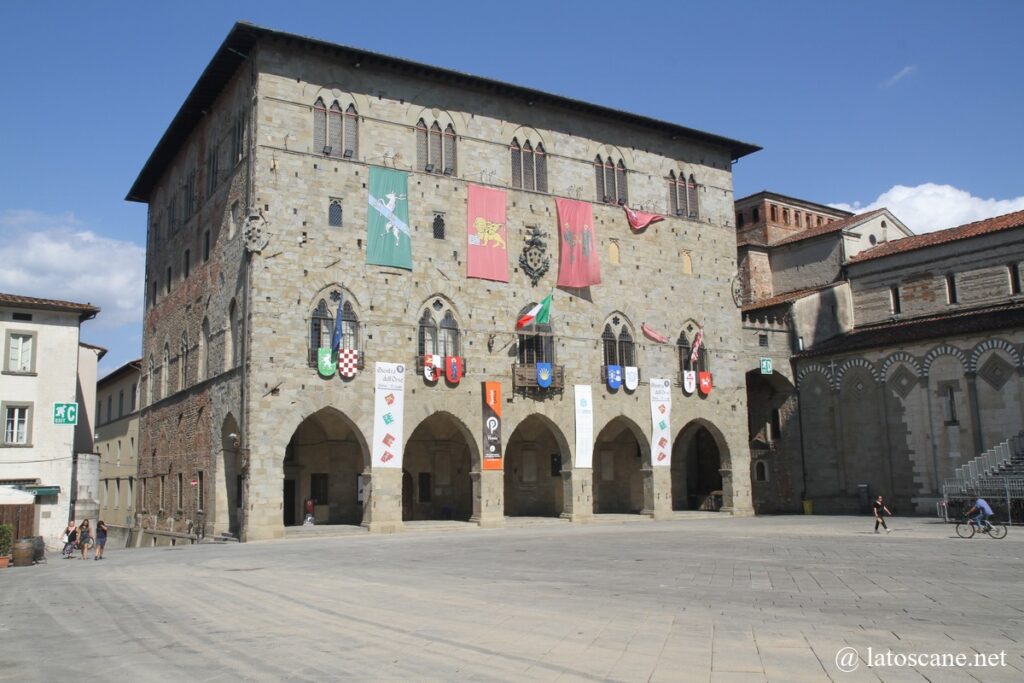
Bishop’s Palace and Millefiori Tapestry
Next to the cathedral in Piazza del Duomo, the ancient Bishop’s Palace of Pistoia dates back to the 11th century. It is now the seat of the Pistoia Musei Foundation dedicated to ancient and modern art.
The museum houses a collection of religious furniture, liturgical or reliquary garments and a cycle of paintings by Giovanni Boldini.
A major work in this collection is the Millefiori tapestry, made in Enghien in Flanders around 1530, with a colourful and complex floral scene, with unicorn, fantastic animals, birds, etc.
An archaeological trail is present in the basement where we discover the historical stratifications of the construction of the city.
San Giovanni Fuoricivitas Church
Also called Saint John the Apostle Church, it is an important Romanesque complex dating from the 12th to 14th centuries, called Fuoricivitas because it was located outside the city walls in the Lombard era. Its exterior ornament is remarkable with its bichromy of white and green marble.
The interior keeps beautiful sculptures with first of all the pulpit of Guillaume di Pisa (1270). The church is supported by two columns on the back of two lions, decorated with Stories from the New Testament.
In the church we can also admire the basin of Giovanni Pisano and the Visitation of Luca della Robbia in terracotta (1445), the polyptych of Taddeo Gaddi from the 14th century. The cloister dates from the 13th century.
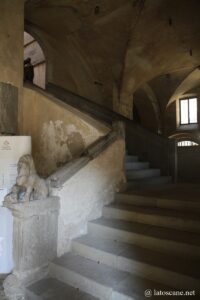
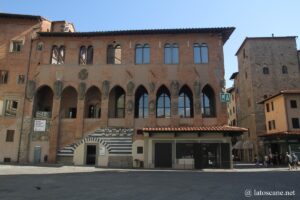
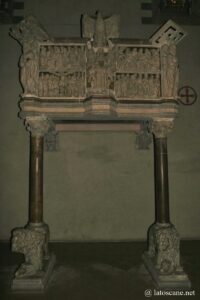
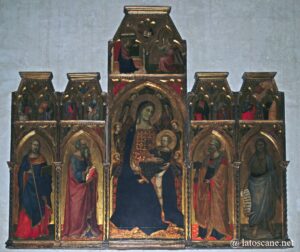
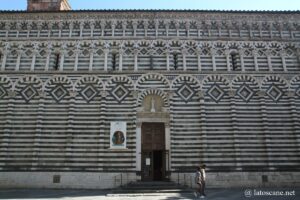
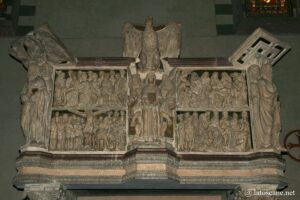
Piazza della Sala
The Piazza della Sala is the most lively square in Pistoia, with its morning market, bars and terraces. This was for a long time the place of the market, in the heart of the merchant district with many shops in the surrounding streets.
In the centre is the Pozzo del Leoncino, an old medieval well with a sculpted lion from the 16th century, the Florentine Marzocco symbolising the victory of Florence over Pistoia, with its paw on the city’s coat of arms.
The adjacent square Piazzetta degli Ortaggi, corresponding to the old vegetable market, has a contemporary bronze sculpture the Giro del Sole.
Ceppo Hospital
The Ceppo Hospital (hospital of the stump in English), founded in 1277 and enlarged in the 14th century, was active until 2013. According to legend it was built on the place of miraculous flowering in winter of a withered strain.
Its buildings are of great architectural and artistic value. Its masterpiece of the Renaissance is the frieze freggio robbiano in polychrome enamelled terracotta on the floor of the external loggia, from the workshop of Della Robbia, crossing the whole facade.
It tells the long medical history of the place, such as the welcome of pilgrims, the visit of the sick and prisoners, the burial of the dead, the gift of food to the hungry, drink to the thirsty. The scenes are interspersed with figures of Virtue: Prudence, Faith, Charity, Hope and Justice.
It houses the Hospital Museum, dedicated to the history of health in Pistoia, with its 18th century anatomical theatre, surgical tools, historical documents, pharmacy, history of its illustrious doctors, etc. A section is dedicated to the frieze on the façade. The underground can also be visited with the Pistoia Sotterranea Museum
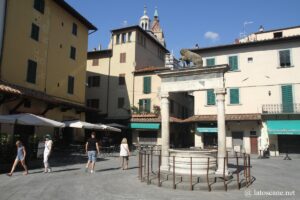
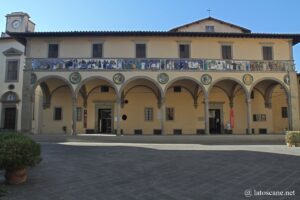

Saint Andrew’s Church in Pistoia
The Pieve di Sant’Andrea dates back to the 7th century and its current appearance is from the 12th century. Its façade is typical of the Roman style of Pistoia, in white and green bicolour marble. On the central portal’s architrave is represented the Journey of the Three Kings, a scene rarely seen in such a placement, linked to the important activity here related to pilgrimage.
The church has a beautiful pulpit carved in 1301 by Giovanni Pisano illustrating passages from the lives of saints. The work has similarities with the achievements of Giovanni’s father (Nicola Pisano) in the Siena Cathedral or with the Baptistery of Pisa.
Seven columns of the perimeter support the hexagonal work, plus one in the center, two of which rest on lions, one on a telamon and the center on a group with a winged lion, an eagle and a griffon.
In the upper part are carved allegories, prophecies, and scenes from the New Testament with a pronounced dramatic aspect.
The church also has two wooden crucifixes carved by Giovanni Pisano, Christ being represented “deformed” where the muscles have geometric shapes.
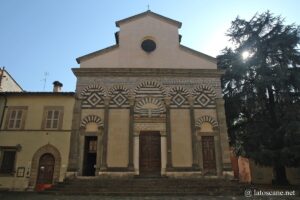
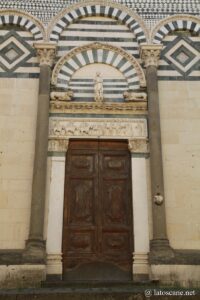
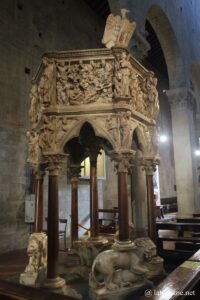
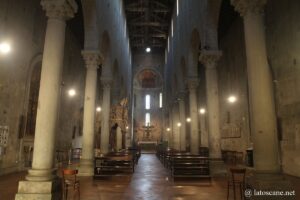
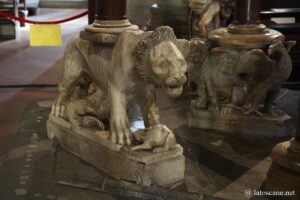
Pistoia’s Underground
A 700-metre route explores the underground of Pistoia following the ancient bed of the river Brana, documenting the evolution of the city. You can access the Pistoia Sotterranea Museum near the Ceppo Hospital, exploring the remains dating from the construction of the complex in the thirteenth century to the contemporary era, with sometimes narrow passages, a Roman bridge, medieval washhouses, Remains of a city gate and mills.
Zoological Garden of Pistoia
The Pistoia Zoo is one of the most famous zoological parks in Italy, located 4 km west of the historic centre of Pistoia. On its 7 hectares, it is home to nearly 500 animals including many endangered species, including mammals, birds, reptiles and amphibians, installed in environments approaching their natural habitat.
The most emblematic ones are the brown bear, lions, tigers, lynx and wolves, elephants, giraffes, penguins and sea lions, parrots or lemurs of Madagascar.
Guided tours are also available in the evening.
San Bartolomeo in Pantano Church
The church of San Bartolomeo in Pantano is an important medieval building in Pistoia. Founded in the 8th century, its current appearance dates back to the 12th century, with its Romanesque façade inspired by the Pisan novel of the Cathedral of Pisa.
The portal is decorated with a low-relief with Christ and the Apostles.
The interior has another Romanesque pulpit carved in 1250 by Guido da Como. The pulpit is supported by columns carried by lions. It is sculpted by Stories of the New Testament.
Basilica Sanctuary Madonna of Humility
This important basilica sanctuary Basilica della Madonna dell’Umiltà, dedicated to the Virgin Mary was built at the end of the 15th century on the foundations of the Santa Maria Forisportam church which was originally located outside the city walls as its name indicates.
It stands out with its great dome of the sixteenth century, the third largest in Italy with 20.50 meters in diameter and 60 meters high, made by the famous Giorgio Vasari, and inspired by that of Santa Maria del Fiore by Bruneleschi in Florence.
It preserves the Virgin’s Treasury, with sacred and precious objects, fabrics, ex-voto, etc.
The octagonal interior has six altars adorned with works of art, under the cupola, preceded by the vestibule with barrel vaults where the medieval church decorated with frescoes of the eighteenth century was located.
The altars have paintings by Florentine painters from the 16th to 18th centuries.
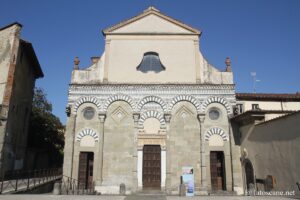
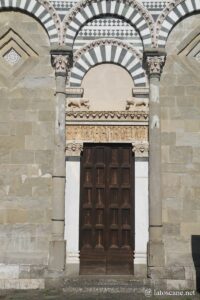
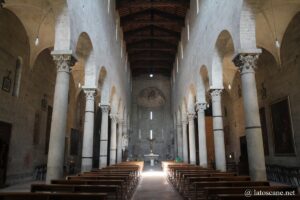
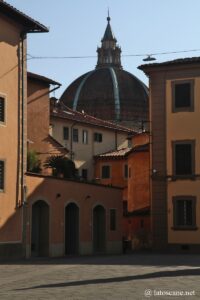
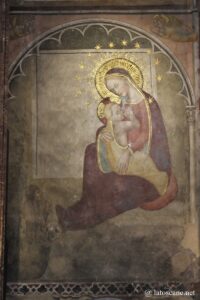
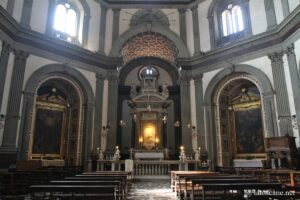
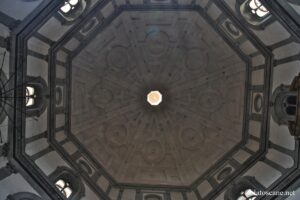
20th Century and Contemporary Museum
The elegant Palazzo Fabroni, originally a medieval tower house that belonged to the Dondori family in the 14th century, houses the Museum of the 20th Century and Contemporary Art of Pistoia. It hosts temporary exhibitions and a permanent collection that brings together works by artists related to Pistoia, from the year 1920 to the present day, exploring different styles such as Arte Povera, Conceptual, Minimalist Art, etc.
Villa di Celle
The Fattoria di Celle or Villa di Celle is a complex set on the grounds of a 15th-century villa, almost 5 km away in the Santomato district east of Pistoia. It is a place that seems a little hidden and yet known worldwide for its Gori Collection, an important collection of contemporary art, which can be discovered by walking through its romantic garden of almost 30 hectares.
These are 80 monumental works of art integrating/dialoguing with the environment, created by great international contemporary artists.
Other churches in Pistoia
Church of Tau
Built around 1340, the Church of the Tau was entrusted to the canons of Saint-Anthony of Tau, whose habit bore the Greek letter Tau. Often reworked, the church was restored in the twentieth century, and now desacralized.
The interior preserves in particular a pictorial cycle of the late Gothic period by the workshop of Niccolò di Tommaso. There are also works by Marino Marini (1901-1980), such as sculptures of knights and dancers, and a library dedicated to the artist.
St. Paul’s Church
The original structure of the Saint-Paul’s Church dates back to the 10th century, but it took its present form in the 12th century, with an exterior in Tuscan Gothic style, while the interior is stripped down, renovated in the 17th and 19th centuries, which suffered a fire in 1895.
Inside there is a fresco of Saint Agatha and Saint Eulalia by Gerino Gerini (1520), with an ancient crucifix from the 14th century. Frescoes from the 14th and 15th centuries were revealed in the sacristy.
St. Prospero and Filippo’s Church
The St. Prospero and Filippo’s Church has two important paintings on the altar, including the Flagellation by Giovanni Lanfranco.
In the 18th century, the frescoes of the cupola were painted by Gian Domenico Ferretti.
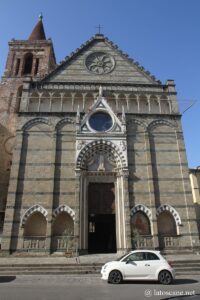
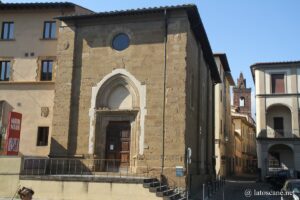
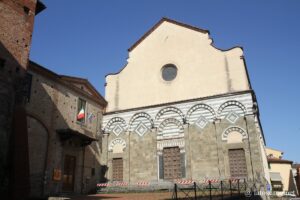
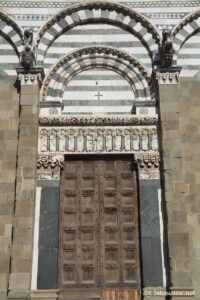
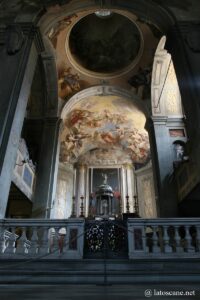
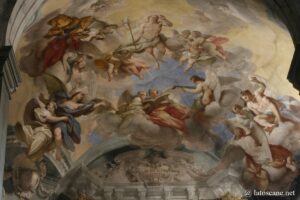
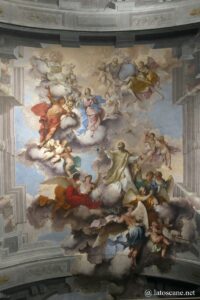
Other places in Pistoia
Catilina Tower
The Catilina Tower is one of the oldest towers in Pistoia, 30 meters high, whose name is linked to the legend that under its foundations was buried the Roman Lucius Catilina. You can go up to the terrace to admire a beautiful panorama on the square and the surrounding roofs.
Santa Barbara Fortress
The Fortress of Santa Barbara in Pistoia dates back to the 14th century, built by the Florentines on the site of the chapel of St. Barnabas. The Pistoians demolished it shortly afterwards in rebellion. Later in the 16th century, Cosimo I de’ Medici launched a reconstruction to establish the power of Florence over the city. The medieval structure is still the tower and part of the keep.
Montuliveto
Montuliveto is a park in the center of Pistoia, with its stylish café-restaurant, also hosting cultural events, whose garden is the largest green space in the city with 17,000 m 2.
Cino Garden
Born from a recent urban requalification project, the Cino Garden is a little-known place, cultural center with exhibitions and events. A beautiful mural, No Hesitation, by street artist Millo. She represents two young people who open the door of each other’s hearts.
Marino Marini Museum
Currently closed.
Inside the Palazzo del Tau, the Marino Marini Museum is dedicated to the famous sculptor of the 1940s from Pistoia. It is divided into four parts: the Pomone, nude female figures inspired by the goddess of fertility; the equestrian world; the circus and theatre world; and portraits.
Proposal for guided tours and others
Tourist map of Pistoia
If you see this after your page is loaded completely, leafletJS files are missing.
Posts about Pistoia
- Pistoia in Tuscany
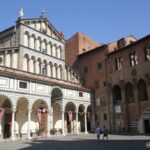 Pistoia is a small town of almost 90,000 inhabitants in northern Tuscany located between Florence and Lucca. In the shadow of these two illustrious neighbors, it is spared by the ...
Pistoia is a small town of almost 90,000 inhabitants in northern Tuscany located between Florence and Lucca. In the shadow of these two illustrious neighbors, it is spared by the ... - Collodi and Val di Nievole
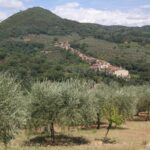 Between Lucca and Pistoia, the Val di Nievole is a gentle region full of small treasures and gardens, from its spas to its natural areas, with lush hills, woods of ...
Between Lucca and Pistoia, the Val di Nievole is a gentle region full of small treasures and gardens, from its spas to its natural areas, with lush hills, woods of ... - Surroundings of Pistoia
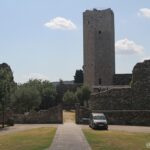 This page explores the surroundings of the pretty town of Pistoia, in the homonymous province, read also the page dedicated to On the Lucca road, the fortress of Serravalle Pistoiese ...
This page explores the surroundings of the pretty town of Pistoia, in the homonymous province, read also the page dedicated to On the Lucca road, the fortress of Serravalle Pistoiese ... - Pistoia Cathedral of San Zeno
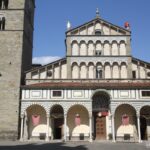 The Cathedral of San Zeno (in Italian: Cattedrale di San Zeno or Duomo di Pistoia), is the most important religious building in the city, a beautiful Romanesque structure with its ...
The Cathedral of San Zeno (in Italian: Cattedrale di San Zeno or Duomo di Pistoia), is the most important religious building in the city, a beautiful Romanesque structure with its ... - Hotels in Pistoia
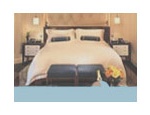 Search and book quickly accommodation in Pistoia, among dozens of structures, hotels, apartments or guest houses
Search and book quickly accommodation in Pistoia, among dozens of structures, hotels, apartments or guest houses - Weather in Pistoia
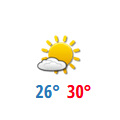 Weather forecast in Pistoia, Tuscany, current and upcoming days including rainfall, temperature and air quality. Weather forecast in Pistoia, 5 days Complete weather in Pistoia Into the same category
Weather forecast in Pistoia, Tuscany, current and upcoming days including rainfall, temperature and air quality. Weather forecast in Pistoia, 5 days Complete weather in Pistoia Into the same category
No Comments Yet